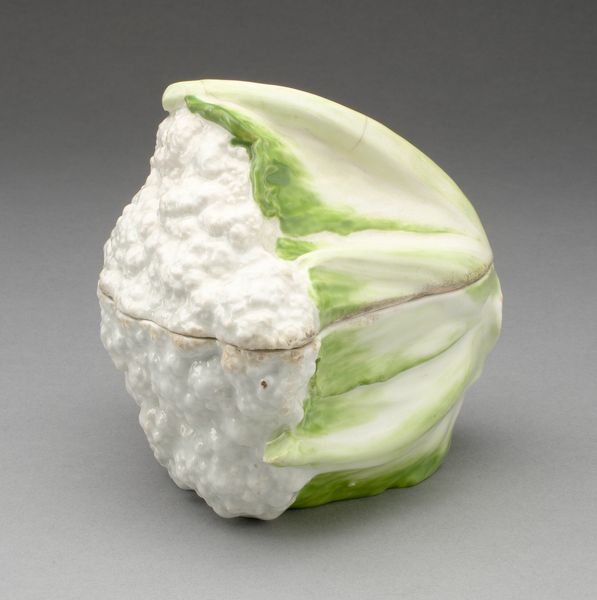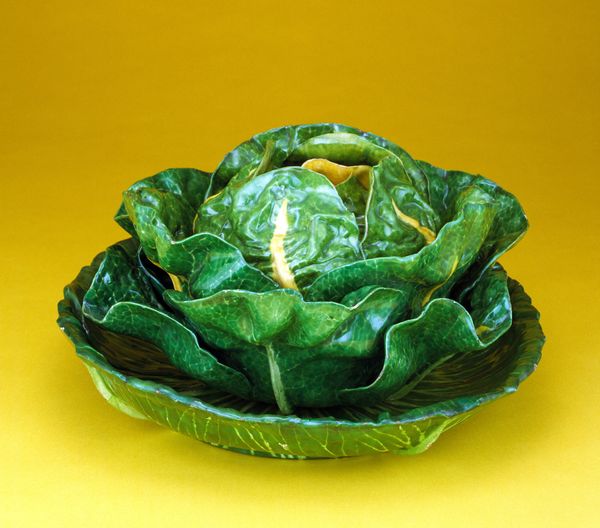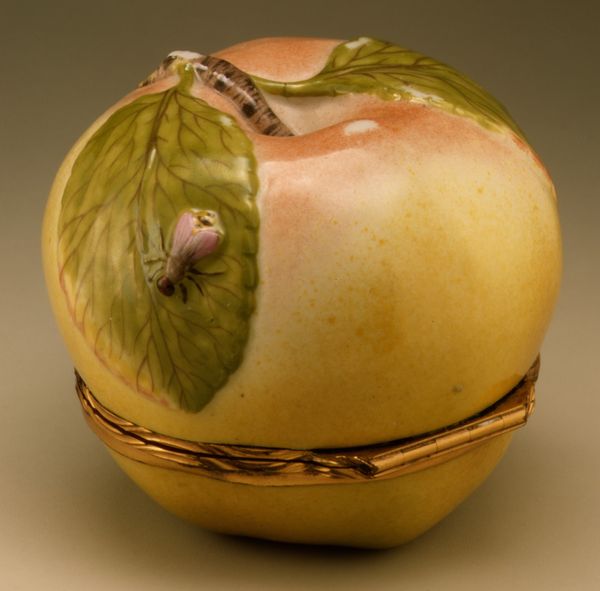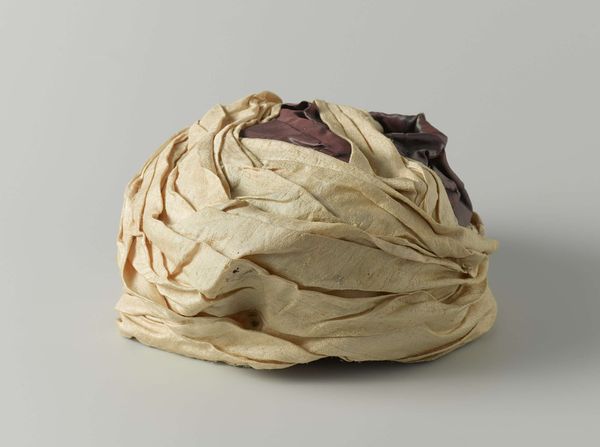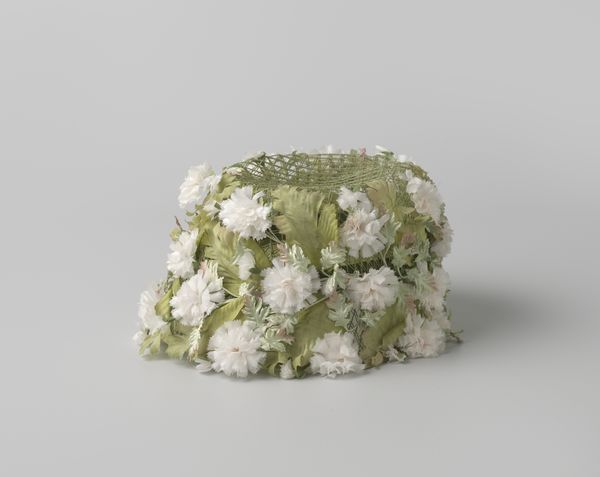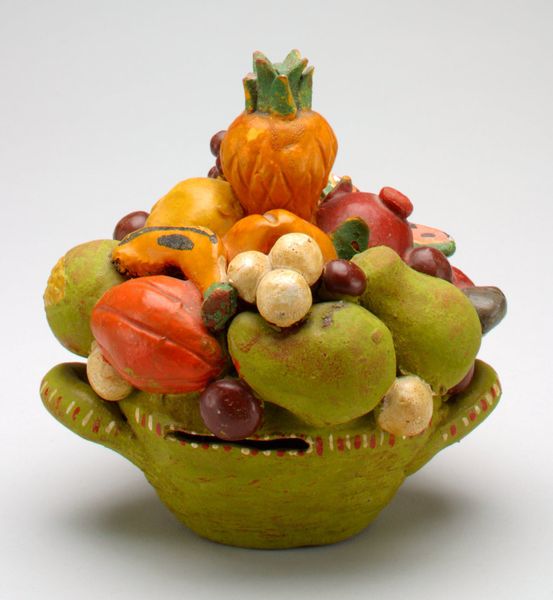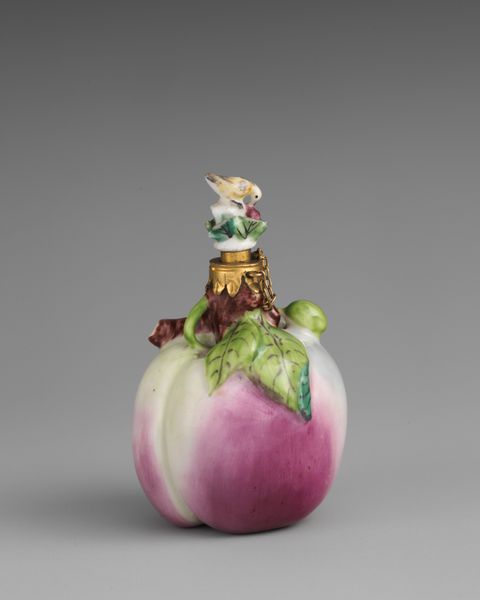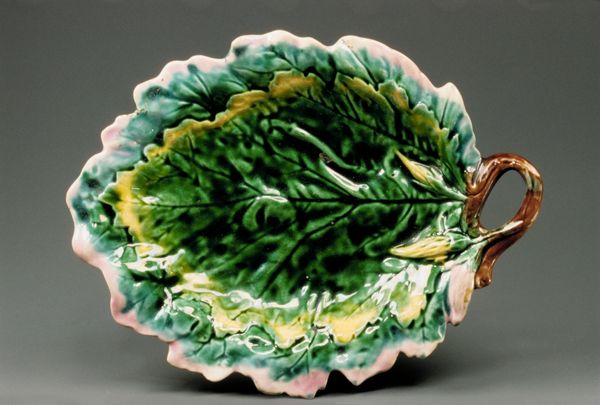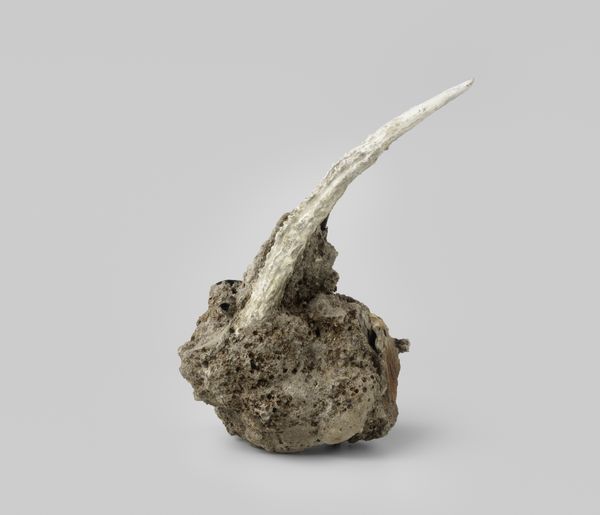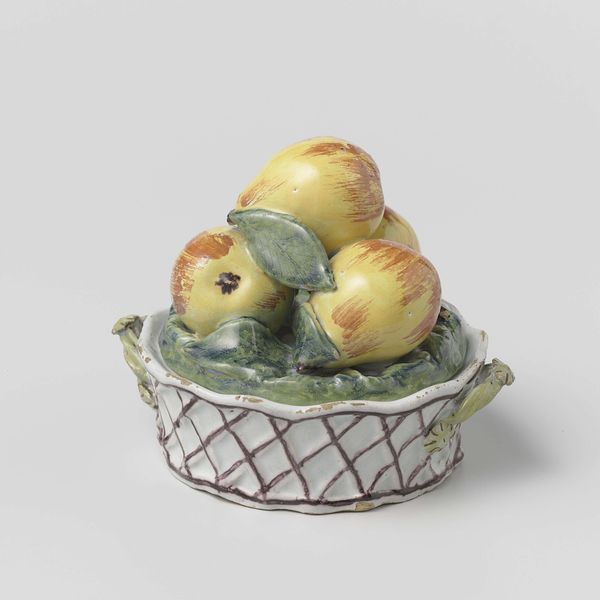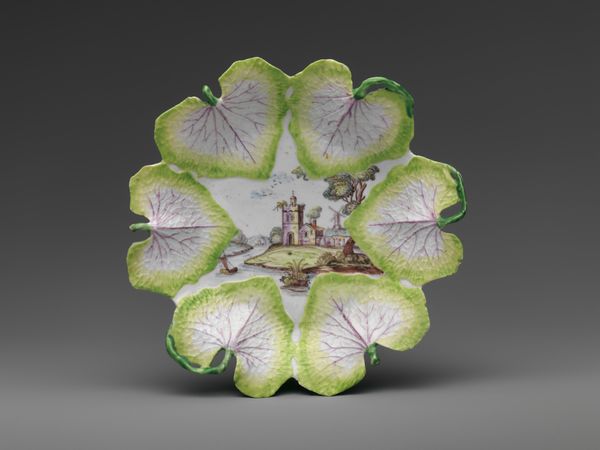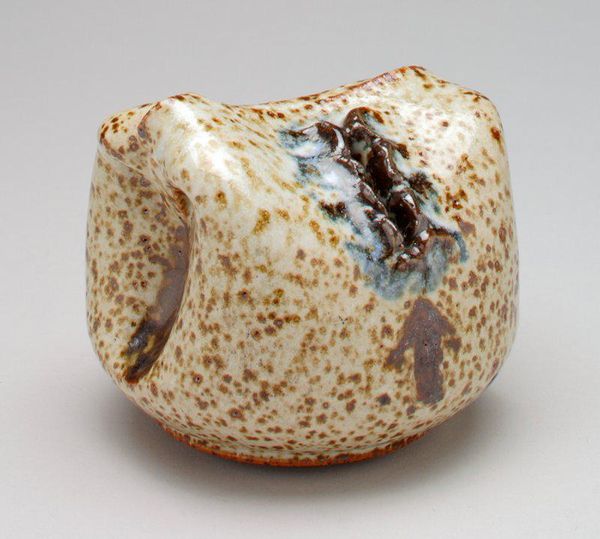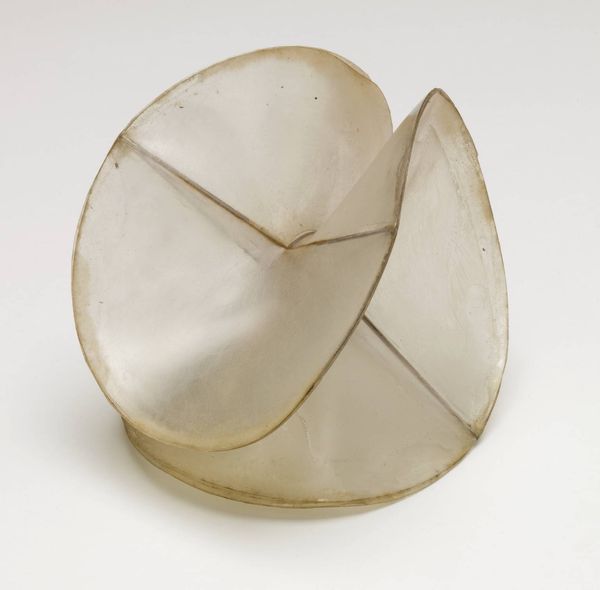
ceramic, porcelain
#
ceramic
#
porcelain
#
decorative-art
Dimensions: 12.4 × 13.2 × 13.5 cm (4 7/8 × 5 3/16 × 5 5/16 in.)
Copyright: Public Domain
Editor: Here we have the “Cauliflower Tureen,” created around 1755 by the Chelsea Factory, crafted from ceramic, specifically porcelain. The sheer novelty of rendering a vegetable as a fancy serving dish really strikes me. What do you make of this piece? Curator: Its appeal lies, for me, in considering porcelain as a manufactured material. We should contemplate the conditions under which the Chelsea Factory workers, likely underpaid, produced this object to mimic an organic form, for wealthy patrons. It raises interesting questions about value. Editor: Value? Can you elaborate? Curator: Well, consider the raw materials and labor involved in creating porcelain. Transforming earth into this delicate cauliflower demanded considerable resources. Is it an object of utility, or of art, and how do these labels influence its market worth? Editor: That's fascinating. So, it's less about the artistry itself and more about the economic and social factors surrounding its creation? Curator: Exactly! This tureen encourages us to challenge the perceived hierarchy between "fine art" and mass-produced, "decorative" objects by reflecting upon what went into it and for whom. What might this say about our contemporary relationship to ceramics and industrial materials today? Editor: I see now! I never thought about the social implications behind such an elaborate object. Curator: Indeed. This tureen demonstrates how material analysis offers critical insights into social values, class structures, and even, in some sense, our present patterns of consumption. Editor: Thinking about all of the different factory laborers creates an intriguing, almost hidden layer of depth to what would otherwise be purely decorative art. Thank you for showing me the material process aspect.
Comments
No comments
Be the first to comment and join the conversation on the ultimate creative platform.
